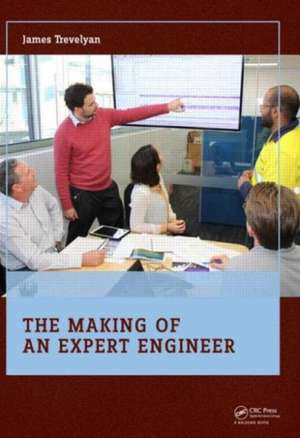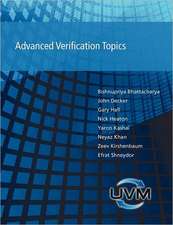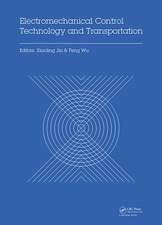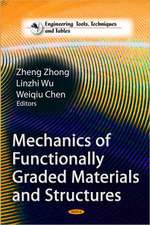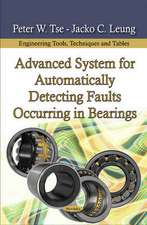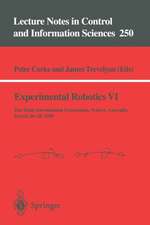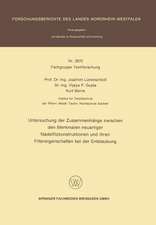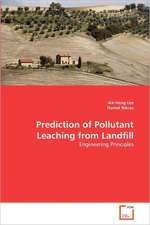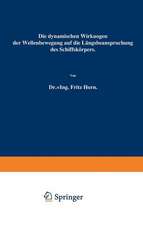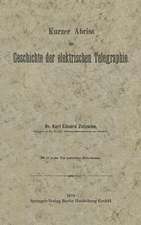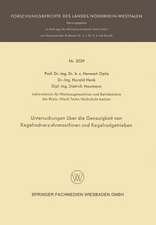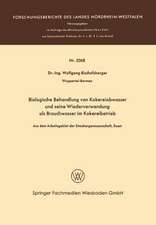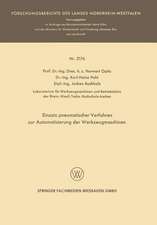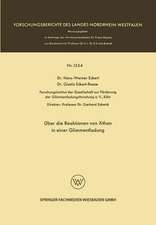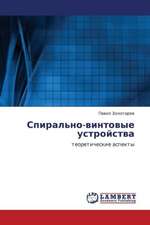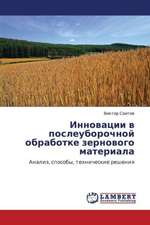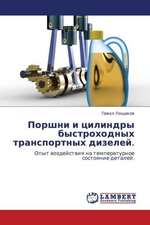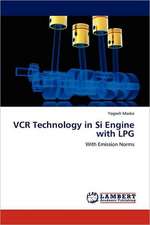The Making of an Expert Engineer
Autor James Trevelyanen Limba Engleză Hardback – 22 sep 2014
| Toate formatele și edițiile | Preț | Express |
|---|---|---|
| Paperback (1) | 378.84 lei 6-8 săpt. | |
| CRC Press – 30 iun 2020 | 378.84 lei 6-8 săpt. | |
| Hardback (1) | 890.78 lei 6-8 săpt. | |
| CRC Press – 22 sep 2014 | 890.78 lei 6-8 săpt. |
Preț: 890.78 lei
Preț vechi: 1187.07 lei
-25% Nou
Puncte Express: 1336
Preț estimativ în valută:
170.47€ • 176.11$ • 141.88£
170.47€ • 176.11$ • 141.88£
Carte tipărită la comandă
Livrare economică 26 martie-09 aprilie
Preluare comenzi: 021 569.72.76
Specificații
ISBN-13: 9781138026926
ISBN-10: 1138026921
Pagini: 612
Dimensiuni: 174 x 246 x 38 mm
Greutate: 1.3 kg
Ediția:1
Editura: CRC Press
Colecția CRC Press
ISBN-10: 1138026921
Pagini: 612
Dimensiuni: 174 x 246 x 38 mm
Greutate: 1.3 kg
Ediția:1
Editura: CRC Press
Colecția CRC Press
Public țintă
PostgraduateCuprins
Preface: Engineering practice has been invisible 1. Why engineer? 2. What type of engineer? 3. Flying start, no wings, wrong direction 4. Becoming an expert 5. What engineers know 6. Three neglected skills: Listening, seeing and reading 7. Collaboration in engineering 8. Informal teaching: More than an interpreter 9. Technical coordination: Informal leadership 10. Managing a project 11. Understanding investment decisions 12. Negotiating sustainability 13. Great expectations 14. Seeking work 15. Conclusion; Guide to online appendices; References; Keyword Index; Index of People and Organisations.
Notă biografică
Professor James Trevelyan is a Winthrop Professor in the Mechanical and Chemical Engineering School at The University of Western Australia. His main area of research is on engineering practice, and he teaches design, sustainability, engineering practice and project management.
He is well known internationally for pioneering research that resulted in sheep shearing robots (1975-1993).
He and his students produced the first industrial robot that can be remotely operated via the internet in 1994. The robot has been controlled by a conservatively estimated 500,000 people in dozens of countries.
He was presented with the 1993 Engelberger Science and Technology Award in Tokyo in recognition of his work, and has twice been presented with the Japan Industrial Robot Association award for best papers at ISIR conferences. These are the leading international awards for robotics research.
His teaching has also been well recognised: he was presented with the ASME Award for Mechanical and Mechatronics Teaching at the 2003 AAEE Conference in Melbourne. He has earned four distinguished teaching awards at UWA, and received a further best paper award at the 2004 International Conference on Engineering Education Research conference in the Czech Republic.
From 1996 till 2002 he researched landmine clearance methods and his web site is an internationally respected reference point for information on landmines. He was awarded with honorary membership of the Society of Counter Ordnance Technology in 2002 for his efforts, and was also elected a Fellow of the Institution of Engineers Australia.
His most recent work is research on engineering practice that aims to understand how engineering work is actually performed, an aspect of engineering that has not been researched before. This work is helping to explain why engineering and process-oriented companies can typically lose 30% of their turnover from engineering, maintenance and operation mistakes. It also helps to explain why engineering services in the developed world seem to cost much more than they should, often much more than in industrialised countries, and is a significant factor inhibiting poverty reduction. Professor Trevelyan is working on education programs that could help overcome shortcomings in engineering training programmes in developing countries.
Professor Trevelyan’s web page is: http://www.mech.uwa.edu.au/jpt/ and this has a large amount of supplementary information on his research and teaching.
He is well known internationally for pioneering research that resulted in sheep shearing robots (1975-1993).
He and his students produced the first industrial robot that can be remotely operated via the internet in 1994. The robot has been controlled by a conservatively estimated 500,000 people in dozens of countries.
He was presented with the 1993 Engelberger Science and Technology Award in Tokyo in recognition of his work, and has twice been presented with the Japan Industrial Robot Association award for best papers at ISIR conferences. These are the leading international awards for robotics research.
His teaching has also been well recognised: he was presented with the ASME Award for Mechanical and Mechatronics Teaching at the 2003 AAEE Conference in Melbourne. He has earned four distinguished teaching awards at UWA, and received a further best paper award at the 2004 International Conference on Engineering Education Research conference in the Czech Republic.
From 1996 till 2002 he researched landmine clearance methods and his web site is an internationally respected reference point for information on landmines. He was awarded with honorary membership of the Society of Counter Ordnance Technology in 2002 for his efforts, and was also elected a Fellow of the Institution of Engineers Australia.
His most recent work is research on engineering practice that aims to understand how engineering work is actually performed, an aspect of engineering that has not been researched before. This work is helping to explain why engineering and process-oriented companies can typically lose 30% of their turnover from engineering, maintenance and operation mistakes. It also helps to explain why engineering services in the developed world seem to cost much more than they should, often much more than in industrialised countries, and is a significant factor inhibiting poverty reduction. Professor Trevelyan is working on education programs that could help overcome shortcomings in engineering training programmes in developing countries.
Professor Trevelyan’s web page is: http://www.mech.uwa.edu.au/jpt/ and this has a large amount of supplementary information on his research and teaching.
Descriere
This book sets out the principles of engineering practice, knowledge that has come to light through more than a decade of research by the author and his students studying engineers at work. Until now, this knowledge has been almost entirely unwritten, passed on invisibly from one generation of engineers to the next, what engineers refer to as "experience".This is a book for all engineers. It distils the knowledge of many experts in one volume. The book will help engineers enjoy a more satisfying and rewarding career and provide more valuable results for their employers and clients.The book focuses on issues often seen as "non-technical" in the world of engineering, yet it shows how these issues are thoroughly technical. Engineering firms traditionally have sought expert advice on these aspects from management schools, often regarding these aspects of engineering practice as something to do with psychology or organisational behaviour. The results are normally disappointing because management schools and psychologists have limited insight and understanding of the technical dimensions in engineering work. Little if any of the material in this book can be obtained from management texts or courses. Management schools have avoided the technical dimension of workplace practices and that is precisely what characterises engineering practice. The technical dimension infuses almost every aspect of an engineer’s working day and cannot be avoided. That's why this book is so necessary: there has not yet been any authoritative source or guidance to bridge the gap between inanimate technical issues and organisational behaviour. This book fills this gap in our knowledge, is based on rigorous research, and yet is written in a style which is accessible for a wide audience.
